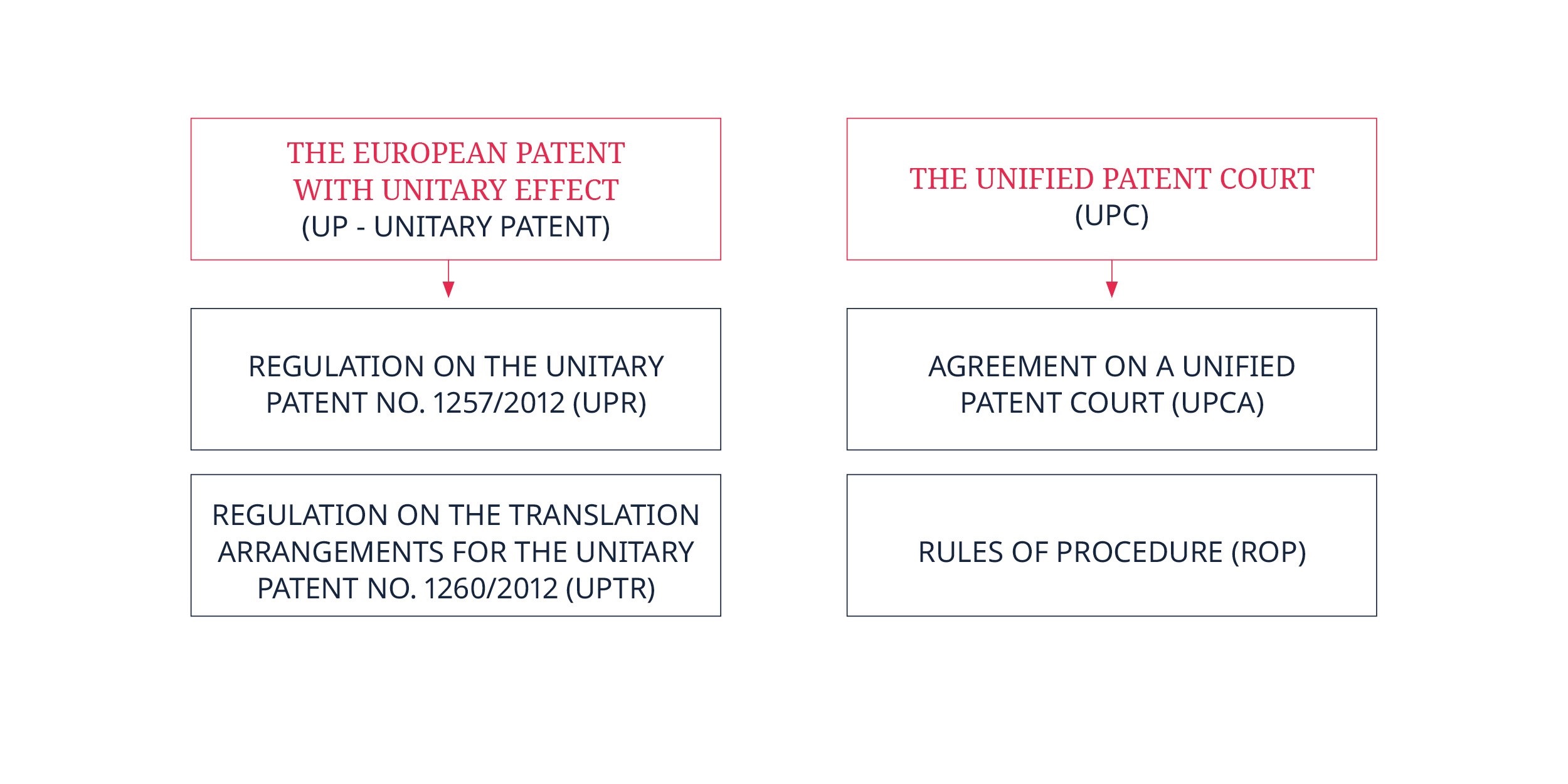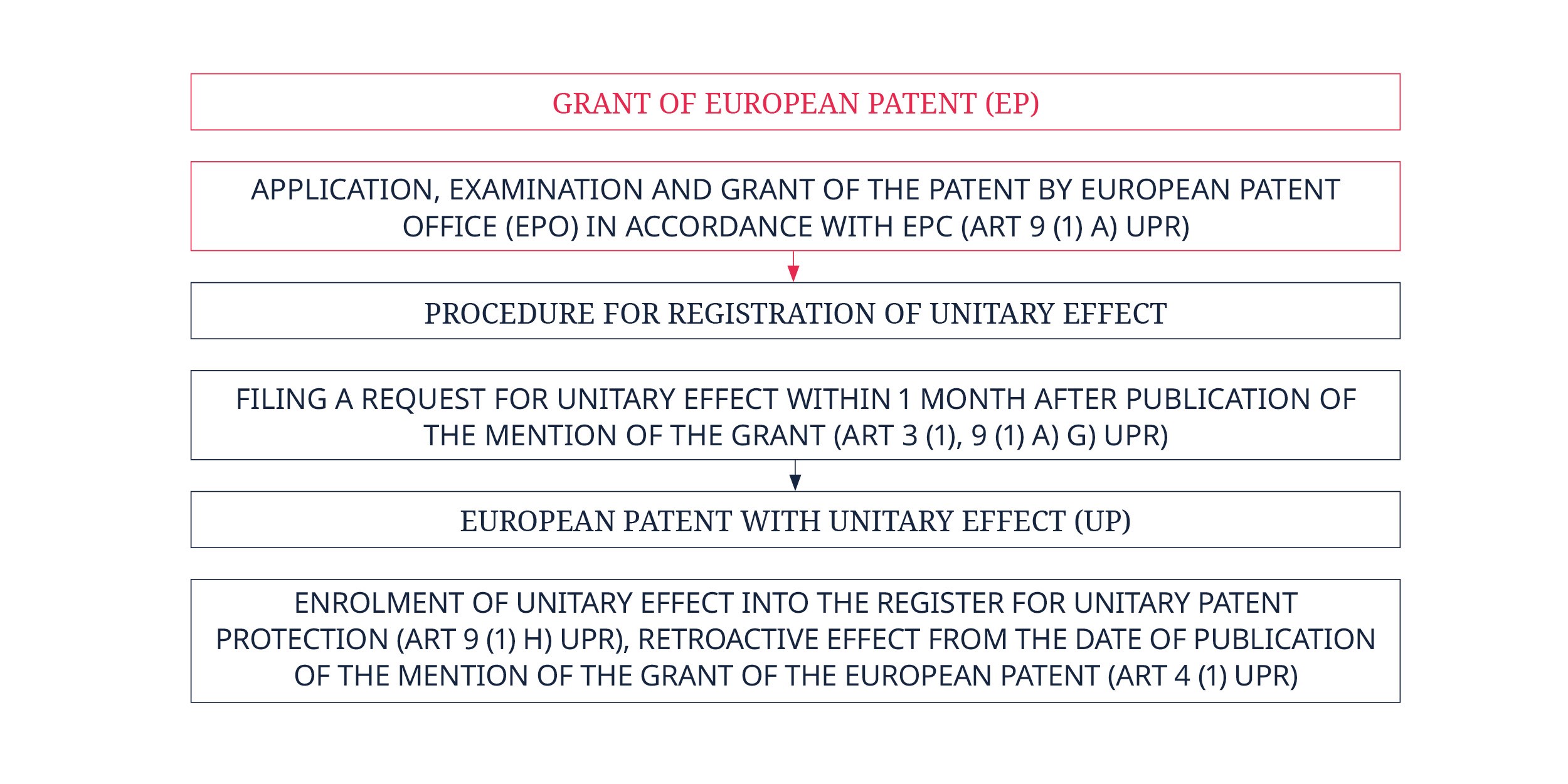The UPC reform package is a unique legislative achievement, resting on two pillars. The first pillar consists of Regulation 1257/2012/EU (regarding the creation of unitary patent protection (UPR)) and Regulation 1260/2012/EU (regarding the applicable translation arrangements (UPTR)). These were adopted in December 2012 within the framework of enhanced cooperation (Art 20 TEU), which allows European law to be created without the consent and/or participation of all EU Member States. Spain decided not to participate, primarily due to language concerns and the new system's focus on the official languages of the European Patent Office (German, English and French). Italy decided to join only in July 2015, confirmed by the European Commission in September 2015.
The second pillar consists of the Agreement on a Unified Patent Court (UPCA), signed by 25 EU Member States in early 2013. Spain, Poland and Croatia are not part of the Agreement. The entire patent reform package was set to enter into force after the ratification of the UPCA by at least 13 of those Member States, and necessarily including Germany, France and Italy. Following the deposit of Germany’s instrument of ratification on 17 February 2023, the UPCA entered into force and the UPC came into existence on 1 June 2023.

The European Patent with unitary effect
Under the new system, a new type of European Patent, the “European Patent with unitary effect” (also referred to as the “unitary patent”), is available. The procedure for obtaining a unitary patent is the same as that for a European bundle patent. Within one month of the grant of a European patent, the patentee must choose whether to opt for unitary protection rather than to validate the patent on a country by country basis in those countries which have ratified the UPCA (and a European bundle patent elsewhere). In contrast to the current European bundle patent, the unitary patent will be one single patent, providing unitary protection in all participating Member States. On this basis, the patent proprietor may obtain an injunction with effect throughout the territories of all participating Member States and the patent may be revoked in one single action with the same pan-European effect (cf. Art. 5 UPR).
The validity requirements for a UP are the same as for a European bundle patent, i.e. as set out under the European Patent Convention (EPC). Although the scope of protection of unitary patents is to be uniform in all participating Member States (Article 5 UPR), infringement is a matter of national law, as is ownership (specials rules exist for the latter: see Article 7 UPR). The requirements for the application, examination and granting of unitary patents are governed by the EPC, while the European Patent Office continues to be the competent body for examination and grant, as well as for opposition proceedings.

Languages
One of the more debated issues in the creation of the unitary patent was the language regime. Spain filed two actions against several aspects of the unitary patent system with the Court of Justice of the European Union. The CJEU dismissed the first challenge (Cases C-274/11 and C-295/11) in April 2013, in which Spain, supported by Italy, sought annulment of the Council Decision 2011/167/EU authorising the use of the enhanced cooperation procedure to create the unitary patent (see here for more details). The CJEU also dismissed the second challenge (Cases C-146/13 and C-147/13) in May 2015 in which Spain sought annulment of the UPR and UPTR (see here for the decision in the case C-146/13 and here for the decision in the case C-147/13 for more details).
The UPTR specifically addresses the translation arrangements for the European Patent with unitary effect in essence by reference to the official languages of the EPO (German, English and French). In general, where the specification of a European patent with unitary effect has been published in any of these languages, no further translations will be required. However, during a transitional period, further provisions apply. Thereunder, where the language of the proceedings is French or German, a full translation of the specification into English is required, or, where the language of the proceedings is English, a full translation of the specification into any other official language of the European Union is required. The transitional period lapses after a maximum of 12 years. It may be terminated at an earlier point in time when the Council is satisfied that high quality machine translations of patent applications and specifications into all the official languages of the European Union are available. Thus, in practice there may still be some time until one of the objectives of implementing unitary patent protection in the EU, a simplification of translation requirements and a reduction of the associated costs, is accomplished.
Fees
Another more immediate benefit of unitary patents is the reduction in renewal fees when compared to the existing “bundle patent” system. Unitary patents require the payment of a single renewal fee to the EPO. Article 12 UPR provides that the level of renewal fees shall be set at a level that (a) is equivalent to the level of the renewal fee to be paid for the average geographical coverage of current European patents; (b) reflects the renewal rate of current European patents; and (c) reflects the number of requests for unitary effect.
The exact amount of renewal fees for unitary patents was set by the Select Committee of the Administrative Council of the EPO in June 2015, adopting the so called “True Top 4” approach, according to which the fees correspond to the sum of the renewal fees currently paid for the four countries in which European patents were most frequently validated (Germany, France, UK and the Netherlands). Please see here for further information on the precise fees.
This approach presents an attempt to set the fees at a business-friendly level, as value-for-money will certainly be a decisive factor for the success of the new system. On this basis, the UP renewal fees would be attractive at least for patentees who would validate their traditional EP bundle patent in at least four Member States, as they would obtain UP protection in 25 Member States for the same price. It remains to be seen whether SMEs, who may traditionally validate (or file nationally) in fewer countries, are sufficiently incentivized to opt for unitary patents in future.
When deciding whether or not to opt for a unitary patent on grant or a European bundle patent, it should be noted that the European bundle patent offers some flexibility over the life of the patent, in that the patentee may choose to no longer renew the patent in some countries, allowing some renewal fees to be saved. In the case of a unitary patent however, all eggs will be in one basket: unless the renewal fee is paid, the entire patent will lapse.